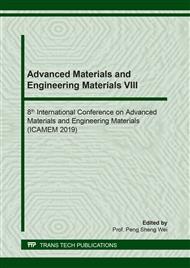p.144
p.152
p.157
p.163
p.171
p.176
p.182
p.190
p.196
Control of Microstructure and Properties of Welded Joints of Heavy Structures of Low Alloy High Strength Steels
Abstract:
In order to prevent the cold cracking of the welded joints and the overheating of the heat affected zone of the welded joints of the heavy and heavy parts of low alloy high strength steels, We have carefully studied the welding materials and methods for heavy parts of alloy high strength steel. We should pay attention to the preparation before welding, strictly control welding energy parameters, temperature parameters and operation parameters, adjust welding line energy and preheating temperature, control welding heat cycle, and adopt appropriate post-weld heat treatment and post-weld inspection process measures. By improving and optimizing the welding technology of heavy and heavy parts of low alloy high strength steel, we can effectively avoid the cold crack and overheating of heat affected zone in the welding of heavy and heavy parts of low alloy high strength steel, and greatly improve the mechanical properties of welded joints.
Info:
Periodical:
Pages:
171-175
Citation:
Online since:
July 2019
Authors:
Price:
Сopyright:
© 2019 Trans Tech Publications Ltd. All Rights Reserved
Share:
Citation:


